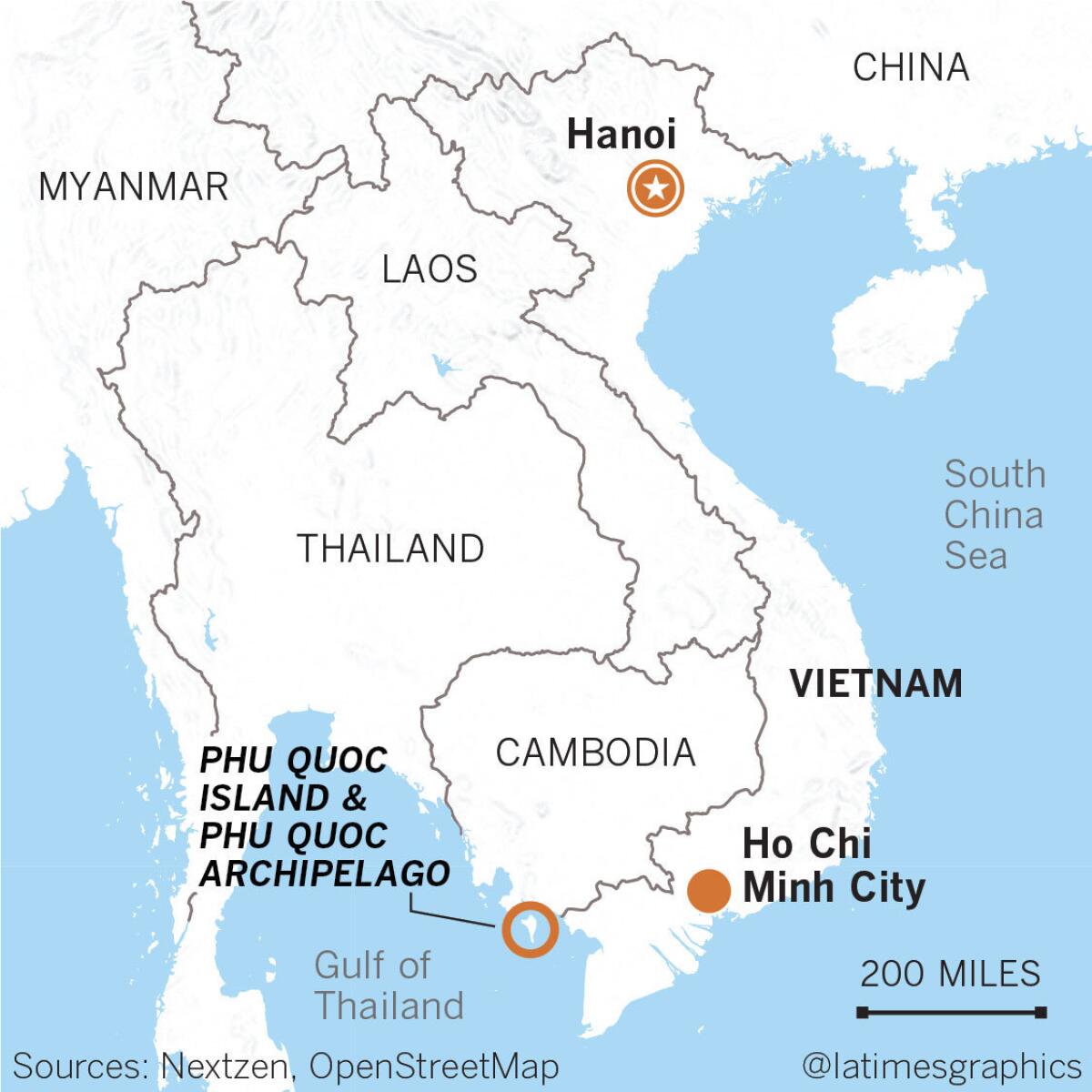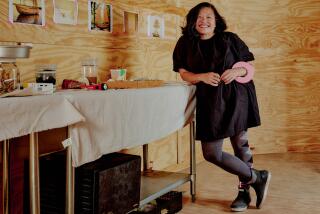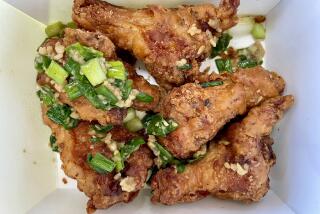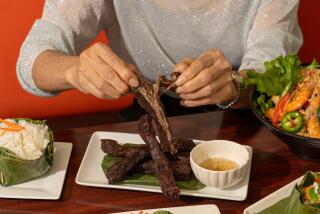Phu Quoc is now a global destination. Is that a good thing?
- Share via
Reporting from Phu Quoc, Vietnam — There are times, as your plane swoops down over someplace you have longed to visit, you wonder: Did we get here just in time, or are we too late?
Thus it was that we capped a three-week visit in December to Vietnam and Cambodia with a stay on Phu Quoc, a vacation island off Vietnam’s southwest coast.
The trip had been filled with nostalgia and harsh collisions with reality because it was my husband’s first return to Vietnam since he was airlifted by helicopter out of Saigon on April 29, 1975, the final day of what is known here as the American War.
Ambivalence and a closet full of ghosts from that past had kept him from returning until, one day, he said, if not now, when?

Phu Quoc — pronounced “foo wok” — was planned as the dessert course of a carefully balanced vacation meal.
We had history, starting with Vietnam’s long background of colonization and then, of course, the war. We had politics, including questions about the state of the U.S. government, as well as troubling discussions about the dramatic effects of climate change in Southeast Asia.
We had religion in the form of visits to temples and a private blessing by a young Buddhist monk. We had art, architecture and local culture. We had agriculture as an ox-drawn cart led us past rice fields and small farms.
We had endless repasts of succulent vegetables and bountiful breakfasts that began with rich Vietnamese coffee. We even had sports when the whole country — or so it seemed — took to the streets to celebrate Vietnam’s victory over Malaysia in the ASEAN Football Federation championship.
Parks and prison
So now it was time for fun. During the war, my husband — a journalist who had spent three years in Vietnam — had established a friendship/source relationship with a member of the South Vietnamese Cabinet.
The Cabinet minister’s access to a military plane made it easy for him to pursue his passions for swimming and deep-sea diving.
He would sometimes round up his favorite U.S. journalists and spirit them off for a day of diving or snorkeling on an island the war’s battles seemed to have overlooked.
True enough, Phu Quoc was the site of an infamous prison that housed the largest number of prisoners during the war, but what my husband remembered was miles of silken sand, clear waters and vast coral reefs where so many tropical fish fed that he practically had to ask some of them to move on so he could view the rest of the marine mob.
Other Vietnam War-era travelers had warned us that Phu Quoc had changed. That much was obvious as the 50-minute flight from Ho Chi Minh City circled over construction cranes, huge resort complexes under development and hotels wedged close to one another in the fashion of Miami Beach and Waikiki.

Nonstop flights to Phu Quoc from London’s Gatwick Airport deposited scores of sun-starved Brits, and Vietnamese families hopped over from the mainland for long weekends.
But the biggest influx of tourists in recent years has come from Russia. Russian-speaking tour agencies and bistros that cater to them are scattered along the main road that circles the island. Vodka, along with copious displays of sunblock, enjoyed brisk sales at the local convenience marts.
A baseball trip through Japan is just what a jaded MLB fan needed »
As a genuine tropical island where the sub-equatorial climate averages 82 degrees, Phu Quoc beckons visitors to mellow out. But just in case the compulsive tourist gets bored, there are sights to see.
Much of the island’s interior is a mountainous national park, ideal for hardy hikers who don’t mind the heat. At Bai Dai, on the island’s northwest corner, the Vinpearl Safari Park promotes itself as Vietnam’s largest zoological park, with 2,000 wild animals and many species of indigenous fauna.
Nearby is the Vinpearl Land Amusement Park, a monument to Western family diversion with its arcade center, waterslides and roller coaster.
More sobering is the Cay Dua (or Coconut Tree) Prison at the island’s south end. Built by French colonialists to house Vietnamese prisoners, Cay Dua became South Vietnam’s largest incarceration center. During the war, Cay Dua held about 32,000 North Vietnamese prisoners, but sometimes the number rose as high as 40,000.
The building became a national historic monument in 1993 and is now a museum, offering testimony to the “indomitable struggle of revolutionary soldiers” during the war. Of course, the prison has a gift shop for tourists.
At this Beijing hotel, guests learn the art of shadow puppetry »
Mention Phu Quoc elsewhere in Vietnam, and before anyone comments on its unusual geological configuration — Phu Quoc is an archipelago of 28 islands, most uninhabited — the first thing anyone is likely to say is fish sauce.
On Phu Quoc, 85 producers manufacture this vital component of Vietnamese cooking. High in protein, salty and pungent to all but the most chronically congested nasal passages, fish sauce — or nuoc mam — is made by layering fish and sea salt in an oxygen-free container. Fermentation can take up to two years.
Tours are available at many of Phu Quoc’s fish sauce factories. Note that many airlines forbid passengers to bring fish sauce on board, lest the bottle break and sicken the entire plane with its fierce aroma.
Around the reefs
But neither fish sauce nor the water park had brought us to Phu Quoc. My husband, buoyed by his memories of spectacular snorkeling, had signed up for an ambitious outing to one of the island’s many reefs. (I was nursing a recently broken femur — that is another story — so I opted out.)
Luxury hotels such as La Veranda, where we stayed, lay claim to some of the smaller islands that make up the Phu Quoc archipelago, and they will arrange private expeditions for a not-small fortune. Instead, my husband chose an established diving company.
At 7:30 in the morning, he waited at the top of the small road that led to our beachfront hotel, armed with snorkeling gear and a head full of memories.
Why Asia? Why now? Here’s why, from a writer who now calls it home »
What he found was that climate change had killed the coral. With nothing to feed upon, the fish had gone elsewhere. His total viewing score for the day was two clownfish — lovely, he said, but lonely with only the two of them out there.
Climate change is not mentioned in the many brochures describing Phu Quoc. For my husband, it was evidence of the rapid changes that have overtaken Vietnam in the years since the war.
Further proof: The site of his newspaper’s office during the war in Ho Chi Minh City is now a Versace boutique. Traffic abounds, and suburban sprawl has gobbled up much of the unoccupied land outside the major cities.
Far from capitalistic enemies of the communist state, Americans are usually welcomed as cash cows who will enhance the country’s economy and bolster its global status.
As we sat on the beach on our final day in Phu Quoc, we heard a Babel of languages spoken around us, a firm indication of just how global this once-obscure destination has become. Had we gotten here just in time, or were we too late?
Perhaps a little of both. But did it matter?
Xian, China, beyond its ancient terra-cotta warriors »
If you go
THE BEST WAY TO PHU QUOC ISLAND, VIETNAM
From LAX, Asiana, United, JAL, Korean and Air China offer connecting service (change of planes) to Phu Quoc. Restricted round-trip fares from $880, including taxes and fees.
WHERE TO STAY
La Veranda Resort, Tran Hung Dao St., Ward 7, Duong Dong Town, Phu Quoc Island, Vietnam. This beachfront hotel, built in the style of a 1920s French Colonial manor, has labyrinthine gardens leading to the 70 rooms. Doubles from $265 a night.
Salinda Resort Phu Quoc Island, Cua Lap Hamlet, Duong To Commune, Phu Quoc Island, Vietnam. This boutique hotel has 121 rooms, suites and villas. Doubles in high season from $410 a night.
Peppercorn Beach, Ganh Dau, Phu Quoc Island, Vietnam. A British Vietnamese/Australian couple quit their day jobs in chilly London about 15 years ago, and the result of their wanderlust was this 5-year-old, 30-room beachfront hotel that includes a dormitory-style suite for families. Doubles from $195 a night.
WHERE TO EAT
Pepper Tree Restaurant, La Veranda Hotel (see above). Dine on a plantation-style balcony overlooking the sea. The Pepper Tree also sometimes hosts a spectacular beachfront barbecue. Main dishes $20-$65.
Hieu’s Family Restaurant, 103 Tran Hung Dao St., Phu Quoc Island, Vietnam. Stuffed squid and freshly caught fish steamed in lemon grass are among the specialties of this casual spot in the garden of the Hieu family home. Main dishes about $7-$15.
Phu Quoc Night Market, Vo Thi Sau St., Duong Dong, Phu Quoc Island, Vietnam. Almost 100 stalls, about half of them devoted to local cuisine, make this bustling market a street food lover’s Garden of Eden. Full meals here for $10 or less.
TO LEARN MORE
More to Read
Sign up for The Wild
We’ll help you find the best places to hike, bike and run, as well as the perfect silent spots for meditation and yoga.
You may occasionally receive promotional content from the Los Angeles Times.






